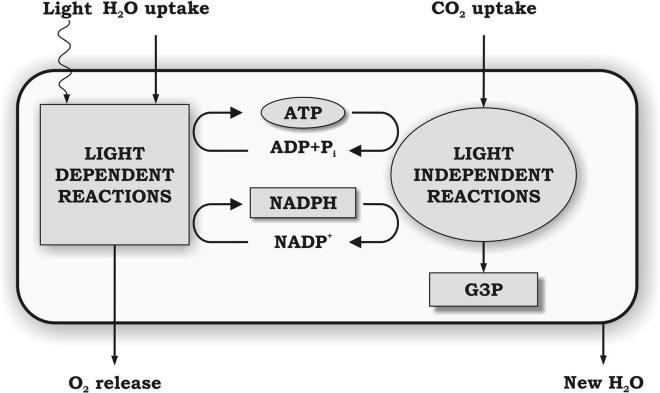Photosynthesis
Photosynthesis encompasses two major groups of reactions. Those in the first group, the “lightdependent reactions,” involve the capture of the light energy and its conversion to energy currency as NADPH and ATP. These reactions are absorption and transfer of photon energy, trapping of this energy, and generation of a chemical potential. The latter reaction follows two routes: the first one generates NADPH due to the falling of the high energy excited electron along an electron transport system; the second one generates ATP by means of a proton gradient across the thylakoid membrane. Water splitting is the source of both electrons and protons. Oxygen is released as a by-product of the water splitting. The reactions of the second group are the “light-independent reactions,” and involve the sequence of reactions by which this chemical potential is used to fix and
reduce inorganic carbon in triose phosphates (Figure 3.1).

FIGURE 3.1 Schematic drawing of the photosynthetic machinery.